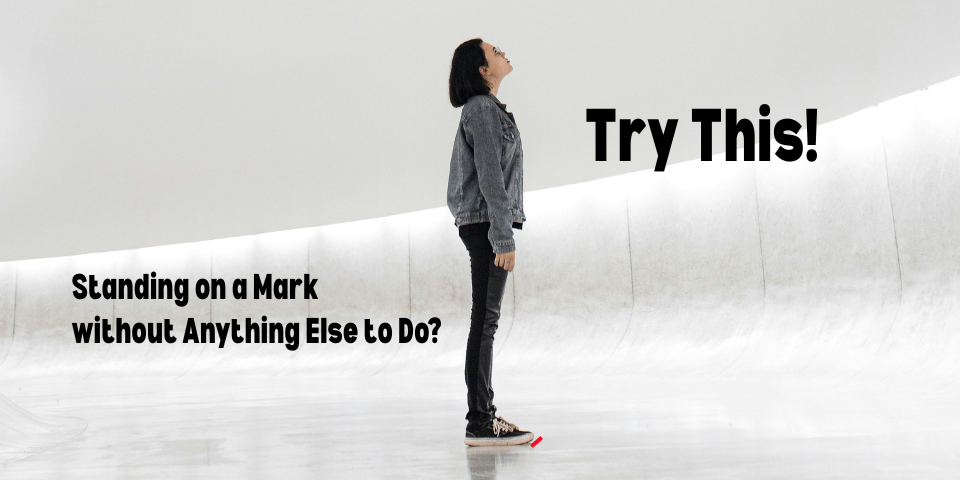Sometimes your first-team actor has a lot of movement during a marking rehearsal–so much that it’s hard to track it all.
Here’s a quick tip I employ for remembering blocking during marking rehearsal.
Backstory
I coach long-form improv. In long-form improv, actors solicit audience suggestions. Then they use those audience suggestions later in their improvisations.
The trouble some actors have is that they forget the audience suggestions later in their improv. It’s interesting to me that this is less likely to happen if the actors repeat the audience suggestions outloud after hearing them.
How I explain it, repeating an audience suggestion “gets the suggestion more in-the-nervous-system” than simply hearing it does. Essentially, in repeating the audience suggestion, the actor uses more of her body and has a larger sensory experience of the audience suggestion than if she simply heard the suggestion. As a result of having a larger sensory experience, she has a better likelihood of remembering the audience suggestion because the experience of the audience suggestion is more vivid.
Self-Narration
Relating this lesson to standing in, I sometimes narrate to myself what I’m seeing going on with my first-team actor as I’m watching a marking rehearsal. That way the experience of the marking rehearsal becomes more vivid to me than simply a visual experience or an aural experience. Also, self-narrating helps me remember the timing of blocking in a scene better than my quick notes on blocking jotted on my sides might help me.
Self-narration might go something like this (below). Of course, I’m not saying this so that anyone can hear me. I’m just actively phrasing what I’m seeing rather than simply observing or jotting down observations.
He knocks. He comes in. He closes the door with his right hand, takes a step in. She counters. He then takes another step in. After she’s done talking, he crosses to the gurney end and turns slightly to her. He says his line about being a loser. She leaves and he takes step toward her. He bends down with feet slightly apart and picks up the magazine card with his left hand. Stands. Looks at it, then at the door. He exits.
The implication here is that there is so much activity in the scene in a short amount of time that it would be very hard to jot it down on my sides in a way helpful for me. Self-narration helps me to remember a bit better what I saw.
Using Self-Narration
After the marking rehearsal, I might then jot down in more detail what I saw in order to better crystalize my memory of the scene. It usually is easier for me to remember things like what hand an actor used when I self-narrated a marking rehearsal.
Give it a try! Read the passage outloud and then ask yourself some questions about the blocking. You might find that you remembered it better than when you simply read the passage!
Have you given self-narration a try? If so, share your results below!






Leave A Comment